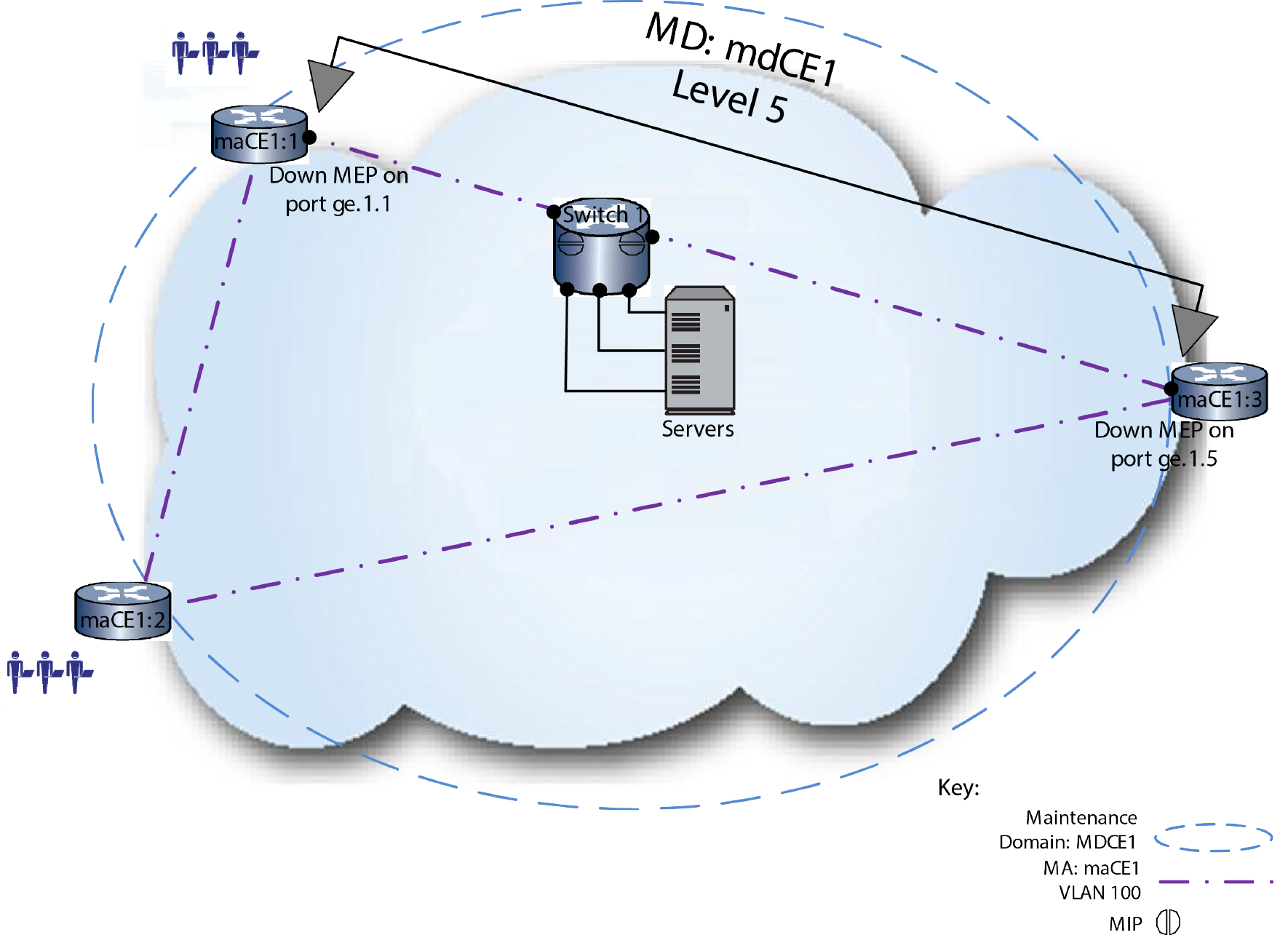A Maintenance Intermediate Point (MIP) resides in the interior of an MD. MIPs are created on ports that reside along the path between MEPs. The MIP supplements the function to the MEPs of the domain. MIPs passively collect information by snooping the CCMs that pass through them. The information is collected in a database. These MIP databases act as highway “mile-markers” along the continuity check message path. MIPs may respond to loopback and linktrace requests received from MEPs in its MD. Use the loopback protocol to determine that a problem exists. Use the linktrace protocol to determine which MIP can identify the problem.
MIPs are comprised of two Maintenance Half Functions (MHFs), one with an “up” direction, and one with a “down” direction. The up direction half function points towards the bridge relay function. The down direction half function points towards the link. Use the show cfm stack-table command to access MIP direction port information. MIPs for a given service can be configured in any domain but must be configured with the same MD level as the MD of the MEPs sending the continuity check messages. MIPs can not be created on devices containing down-MEPs. MIPs can be created on devices containing Up-MEPs or no MEPs. MIPs can be created on down-MEPs using MD default configuration.
You do not administratively configure MIPs. MIPs are automatically created if MHF creation is enabled. If MHF creation is not enabled, MIPs are not created.
Maintenance Intermediate-Point Overview presents a typical situation in which you would want to turn on MIPs. Switch 1 resides in the interior of the MD on a VLAN monitored by MA maCE1. Down-MEPs are configured on port ge.1.1 of maCE1:1 and port ge.1.5 of device maCE1:3. The MD default setting for MHF creation has been enabled on Switch 1. The ports on Switch 1 used by the service are being passively monitored by MIPs. If a problem is reported on one of the servers connected to Switch 1, from a CFM enabled device, use the loopback protocol specifying the MAC address of the Switch 1 port to verify connectivity with the server connected port. Use the linkstate protocol specifying the MAC address of the Switch 1 port to verify that a path exists between the initiating device and the Switch port. Because the server connected ports are on the edge of the network, you may want to put down MEPs on those ports.


 Print
this page
Print
this page Email this topic
Email this topic Feedback
Feedback